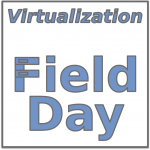As written in a previous post, with the introduction of vSphere 5.0 in addition to the installable version of vCenter Server (which still requires a Windows operating system), there is also a Virtual Appliance version (called VMware vCenter Server Virtual Appliance).
VMware vCenter Server Virtual Appliance (vCSA) is a VMware’s official VA that can be used as an alternative way to implement a full vCenter Server, instead to install on a Windows Server (that must be deployed first). Unlike the installable version, it does not require a Windows Server license and instance, but is rather based on a Linux distribution (it’s a SuSE Enterprise).
Across the various versions after the 5.0, this appliance has been improved to make it more effective and optmized, both in the deploy (available finally also in the form of single OVA file), both in the occupation of space (now the downloadable OVA is smaller also the ISO). Also the embedded database has been improved from the in-flexible IBM DB2 has changed to a more function PostgreSQL (or vPostgres as named by VMware). And finally the upgrade process has been improved and simplified.
With the release of vSphere 5.5, vCenter Server Appliance has become even more attractive not just for test environments or small installations, but also for medium and large size, because it introduces new limits (using the embedded database) really interesting: maximum 100 hosts or 3000 VMs (this must not surprising that much, since it was already known that these limits were reached in the infrastructure for the Hands on Labs).













